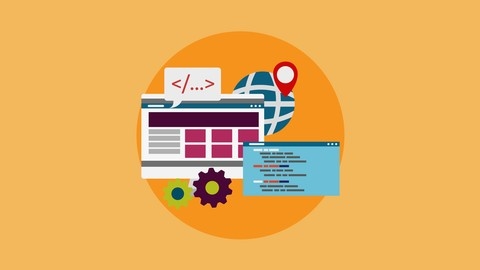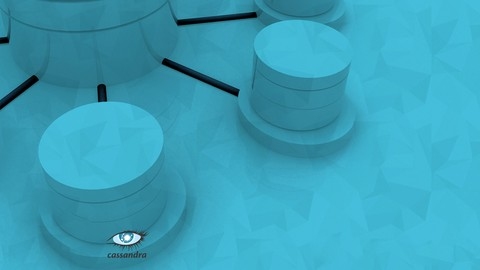From 0 to 1: The Cassandra Distributed Database
This course starts by introducing Cassandra as a column-oriented, decentralized data store, comparing it to other databases like HBase.
You’ll learn how Cassandra differs from traditional relational databases in its data model and architecture.
The course walks you through installing Cassandra on Mac and Unix-based systems, as well as setting up the Cassandra Cluster Manager (CCM) and configuring environment variables.
With CCM, you’ll create a local Cassandra cluster for hands-on learning.
You’ll dive deep into Cassandra’s data model, exploring column families, super column families, and keyspaces.
The course covers advanced data types like collections and counters, along with inserting, updating, and modifying data using shell commands.
A crucial aspect is understanding Cassandra’s keys and indexing mechanisms.
You’ll learn about partition keys for distributing data across nodes, clustering keys for data layout within a node, and using secondary indexes.
The course explains restrictions and best practices for each key type.
Consistency and replication are essential in a distributed system.
You’ll learn about write and read consistency levels, hinted handoff, replication factors, and the quorum value concept.
The course also covers Cassandra’s storage components, including SSTables, row cache, and key cache.
You’ll understand the anatomy of write and read requests, as well as the gossip protocol for node communication.
To solidify your learning, you’ll build a miniature catalog management system in Java, creating sessions, executing queries, managing column families, and performing CRUD operations.
Throughout the course, you’ll gain hands-on experience with Cassandra’s core features, equipping you with the skills to design and develop applications using this powerful distributed database.
Apache Cassandra in 2 hours
You’ll start with an overview of Apache Cassandra and its introduction, giving you a solid foundation to build upon.
From there, the course dives into cluster setup, helping you understand how to configure and manage a Cassandra cluster.
One of the key aspects of the course is its focus on the Cassandra data model.
You’ll learn about partitioning and clustering keys, which are crucial for efficient data storage and retrieval.
The course includes hands-on exercises to reinforce these concepts, ensuring you gain practical experience.
Moving on, you’ll explore Cassandra’s architecture, including replication, write and read consistency, and the gossip protocol.
This knowledge is essential for understanding how Cassandra operates and how to optimize its performance.
The course also covers Cassandra’s storage and SSTable structure, as well as how reads and writes are handled.
You’ll learn about compaction, a critical process for maintaining efficient storage and performance.
Cassandra configuration and cluster management are also covered in-depth.
You’ll learn how to set up a local Cassandra environment, configure various settings, and manage the cluster using the NodeTool utility.
For developers, the course includes sections on integrating Cassandra with Java and Apache Spark.
You’ll learn how to use the Java connector to interact with Cassandra from your Java applications, as well as how to create Spark RDDs from Cassandra tables and process data using Spark.
The course also covers best practices and anti-patterns for Cassandra data modeling, ensuring you design your data models effectively for optimal performance.
Finally, the course touches on deploying Cassandra on the cloud, specifically on Amazon Web Services (AWS).
This is valuable knowledge for those looking to deploy Cassandra in a production environment.
Learn Apache Cassandra from Scratch
The course starts by introducing you to Apache Cassandra.
You’ll learn about the Cassandra data model, how it differs from traditional relational databases, and how it works under the hood.
The course also covers Hadoop, a framework for distributed storage and processing of big data.
Once you have a solid understanding of Cassandra’s fundamentals, you’ll dive into the practical aspects.
You’ll learn how to install Cassandra on Linux and Windows using the DataStax installer.
The course then focuses on the Cassandra Query Language (CQL), teaching you how to plan and structure your data, create tables and fields, insert and select data, and perform updates, alterations, and deletions.
The real fun begins when you start building a Node.js application integrated with Cassandra.
Using Express, you’ll learn to select and display users, retrieve single user details, add new users, and update existing ones.
In the second part, you’ll handle HTTP delete requests, display shouts and user shouts, perform batch insert queries, and even add some styling to your application.
This hands-on approach ensures that you not only understand the concepts but also gain practical experience in working with Cassandra and building applications around it.
Apache Cassandra Installation & Configuration
You’ll start by setting up CentOS Linux servers, either on-premises or on AWS EC2 instances, and installing the necessary packages like OpenJDK.
The course guides you through disabling SELinux and firewalld for a smooth Cassandra setup.
You’ll create dedicated user accounts, directories, and configure Cassandra’s core settings in files like cassandra.yaml.
Authentication and authorization are covered in-depth, allowing you to secure your cluster.
Building a multi-node cluster across multiple data centers is a key focus.
You’ll learn how to bootstrap new nodes, set replication factors, and leverage powerful tools like nodetool.
The course even walks you through setting up password-less SSH for easy cluster management.
On the AWS front, you’ll provision EC2 instances, assign Elastic IPs, and deploy Cassandra in the cloud.
Upgrading Cassandra and exploring its latest 4.1 features are also included.
Throughout, you’ll gain hands-on experience with key Cassandra concepts like data modeling, querying with CQL, and monitoring a production-ready cluster.
Become a Certified Cassandra Developer: Practice Exams
The course offers two practice tests to prepare you for the Apache Cassandra Developer Associate certification exam.
These practice tests closely mirror the actual exam’s format, difficulty level, and question style, ensuring you’re well-equipped for the real challenge.
You’ll have access to meticulously crafted original exam questions that have been recently updated to align with the latest exam content.
After completing each practice test, you can review detailed explanations, relevant images, reference links, and personalized recommendations – resources you won’t find easily elsewhere.
The course provides a dedicated Q&A section where you can post any questions or issues you encounter during your preparation journey.
Additionally, you’ll have the opportunity to leave a rating and review, which plays a crucial role in helping both instructors and fellow learners make informed decisions.
With these practice tests, you’ll gain invaluable hands-on experience and familiarity with the exam format, boosting your confidence and readiness for the Apache Cassandra Developer Associate certification.
Apache Cassandra for Data Engineers
You’ll start by learning what Cassandra is and how it differs from traditional relational databases.
After the introduction, you’ll dive into installing Cassandra on Linux (Ubuntu) machines.
Once installed, you’ll learn the Cassandra Query Language (CQL) for interacting with the database.
Through hands-on exercises, you’ll work with various data types, including user-defined types.
A significant portion focuses on data definition (DDL) and manipulation (DML) statements.
You’ll learn how to create, alter, and drop keyspaces and tables.
For DML, you’ll practice SELECT, INSERT, UPDATE, DELETE, and BATCH statements.
The course also covers arithmetic operators and secondary indexes.
Moving on, you’ll explore Cassandra’s functions, including scalar and aggregate functions.
The architecture section will give you an overview of Cassandra’s design, storage engine, consistency guarantees, and snitch components.
Interestingly, the course integrates Apache Spark with Cassandra.
You’ll learn to install Spark on Ubuntu, create tables in Cassandra, and access/write data from Spark to Cassandra.
With hands-on exercises throughout, you’ll gain practical experience working with this powerful NoSQL database.
Getting Started With Apache Cassandra
The course starts by introducing you to Cassandra, explaining what it is and its use cases.
You’ll learn about the system requirements and how to access the working files provided.
Next, you’ll dive into Cassandra’s architecture, understanding how it’s a distributed database and learning about key concepts like Snitch, Gossip, data distribution, replication, and virtual nodes.
This lays the foundation for working with Cassandra effectively.
The course then guides you through installing Cassandra, ensuring you have the right Java version, configuring permissions, and starting the database.
You’ll learn how to communicate with Cassandra using tools like cqlsh.
From there, you’ll learn how to create databases (keyspaces) in Cassandra, define tables with columns and data types, set primary keys, and work with partition keys and clustering order.
Inserting data is covered, including using the INSERT INTO and COPY commands, as well as understanding how data is stored.
Data modeling is an important aspect, and the course teaches you how to model data in Cassandra, use the WHERE clause, create secondary indexes, and define composite partition keys.
This is crucial for designing efficient data models.
You’ll also learn how to create applications using Cassandra drivers, specifically the DataStax Java Driver.
The course covers setting up a development environment, connecting to a Cassandra cluster, executing queries, displaying results, and using an MVC pattern.
Updating and deleting data is covered, including how updates work, understanding tombstones, and using TTLs (Time to Live).
You’ll learn about selecting hardware, adding nodes to a cluster, specifying IP addresses and seed nodes, bootstrapping nodes, and using tools like cassandra-stress.
Monitoring a cluster is essential, and the course teaches you about tools like Nodetool, JConsole, and OpsCenter.
You’ll also learn about repairing nodes, consistency levels, hinted handoff, and read repair.
The course even covers removing nodes, decommissioning them, putting them back into service, and handling dead nodes.
It also teaches you how to redefine a cluster for multiple data centers, change the snitch type, modify rack/DC properties, and update the replication strategy.
Finally, the course provides resources for further learning, such as documentation, blogs, books, video recordings, forums for asking questions, and information about attending events.
Apache Cassandra : Everything You Need To Know
The course starts by covering the essential theoretical concepts you need to understand before diving into Apache Cassandra.
You’ll learn about scaling and NoSQL databases, the CAP theorem, how Cassandra uses tokens, replication factors, multi-data center setups, and versioning.
The course also explains key terminology and the read-write paths in Cassandra.
Next, you’ll delve into data handling in Cassandra, including the basics of data modeling.
A significant portion of the course is dedicated to the Cassandra Query Language (CQL).
You’ll learn CQL from the ground up, starting with the basics and progressing to advanced topics like JSON support and working with the cqlsh tool for executing CQL statements.
The course doesn’t just teach you the theory; it also covers practical aspects of selecting data using CQL.
After covering the core concepts, the course explores what else you need to know, ensuring you have a comprehensive understanding of Apache Cassandra.
Additionally, the course provides access to Apache Cassandra documentation and introduces you to the instructor.
It also includes a section on the new features in Apache Cassandra 4.1, keeping you up-to-date with the latest developments.
Mastering Apache Cassandra Developer and Admin from Scratch
You’ll start with an introduction to Cassandra and NoSQL databases, learning about the CAP theorem and how Cassandra differs from traditional RDBMS systems.
From there, you’ll dive into installing and configuring Cassandra, understanding its architecture and core components like the peer-to-peer model, gossip protocol, memtables, SSTables, and commit logs.
The course covers essential concepts like keyspaces, replicas, partitioners, and snitches for configuring your Cassandra setup.
You’ll learn the Cassandra Query Language (CQL) and how to use the cqlsh shell, as well as the building blocks of Cassandra like clusters, keyspaces, and column families.
The course guides you through creating databases, defining schemas, working with data types, and querying data.
Importantly, you’ll explore data modeling techniques specific to Cassandra, including design patterns, composite keys, and using secondary indexes.
You’ll also learn how to update and delete data, and work with features like TTLs.
For monitoring and administration, the course covers tools like nodetool, JConsole, and OpsCenter.
You’ll learn how to create applications using drivers like the DataStax Java driver, connecting to clusters, and executing queries.
The course also dives into managing a multi-node cluster, adding and removing nodes, using cassandra-stress for testing, monitoring clusters, performing repairs, and handling consistency and hinted handoff.
You’ll learn about multi-datacenter setups, changing the snitch type, and modifying replication strategies.
Cassandra for Beginners
The course starts by guiding you through installing Cassandra on an Ubuntu-Linux Virtual Machine using VirtualBox.
You’ll learn what VirtualBox is, how to download and install it, and its terminology.
After setting up the virtual environment, the course dives into Cassandra itself.
You’ll gain an understanding of what Cassandra is and how it differs from traditional relational databases (RDBMS).
The course covers Cassandra’s architecture, including key concepts like clusters and keyspaces.
It also introduces you to Cassandra’s data types and the Cassandra Query Language (CQL).
With the foundations in place, you’ll learn how to create, alter, and drop keyspaces.
The course then takes you through Cassandra’s CRUD (Create, Read, Update, Delete) operations, teaching you how to create tables, insert data, read data, update data, and delete data.
You’ll also learn how to use batches for multiple operations, alter tables, create indexes, truncate tables, and drop tables.
The course doesn’t stop there – it also covers Cassandra’s collections, including sets, lists, and maps.
You’ll learn how these collections work and how to insert and update data in them.
Throughout the course, you’ll be working with Cassandra on a virtual machine, giving you hands-on experience with the technology.










